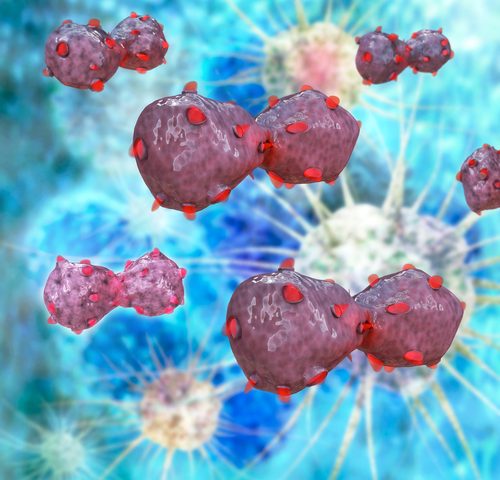 Cancer Research UK is investing up to £16 million in research funding over the next five years to help support four U.K.-wide collaborations focused on developing new approaches to understanding and treating cancers with low survival rates.
Cancer Research UK is investing up to £16 million in research funding over the next five years to help support four U.K.-wide collaborations focused on developing new approaches to understanding and treating cancers with low survival rates.
The Cancer Research UK UCL Centre will receive £4 million to roll out a national bank of post-mortem tissue samples of difficult to treat and metastatic cancers. The Centre says this study will be vital for increased understanding of the evolution and final stages of the disease, and for research into the genetics of brain tumors.
The post-mortem tissue samples will help scientists understand how tumors develop and spread, how and why tumors become resistant to treatment, and how the body reacts to the disease during its final stages. Researchers will also investigate ways to boost the immune system to fight the disease.
The UK UCL Centre will collaborate with Cancer Research UK Belfast Centre, Cancer Research UK Cambridge Centre, Cancer Research UK Glasgow Centre, the Francis Crick Institute, Cancer Research UK Leicester Centre, the Cancer Research UK Manchester Centre, and King’s College London (Guy’s and St Thomas’ Trust).
Likewise, The Cancer Research UK ICR Centre will receive in excess of £4 million to research the best ways to deliver three advanced radiotherapy techniques to patients with hard to treat oesophageal and lung cancer. The funding will be used to train experts and to investigate the ways to deliver stereotactic ablative radiotherapy, image-guided radiotherapy, and proton beam therapy to patients.
The Cancer Research UK ICR Centre will collaborate with Cancer Research UK Oxford Centre, Cancer Research UK Leeds Centre, Cancer Research UK Manchester Centre and the Cancer Research UK UCL Centre.
The Cancer Research UK Southampton Centre will receive about £4 million to investigate how tumors respond to immunotherapy, with the objective of identifying patients most likely to benefit from these types of treatment.
The funding will allow scientists to research new ways to harness and direct the power of immunotherapy to treat lung and oesophageal cancers with poor survival rates. It will also be used to recruit and train experts in unraveling the genetic code of tumors, and to bring experts together to develop ways of combining cutting-edge science and technology.
The Cancer Research UK Southampton centre will collaborate with Cancer Research UK Oxford Centre and the La Jolla Institute for Allergy and Immunotherapy (USA).
The Cancer Research UK Edinburgh Centre will receive about £4 million to set up a crucial research resource for the most common form of brain tumors. Scientists will take samples from patients’ tumors during surgery, and grow tumor cells in the lab to study the molecular faults that result in the disease taking hold, with the goal of discovering better ways to treat and diagnose brain cancer.
The Cancer Research UK Edinburgh Centre will be collaborating with Cancer Research UK UCL Centre, Cancer Research UK ICR Centre, and the Francis Crick Institute.
 Dr. Iain Foulkes, executive director for research funding at Cancer Research UK, said in a release: “It’s really exciting that we’re investing in these innovative and collaborative research projects across the UK. We were really impressed by how the researchers have united their expertise to provide an extra boost to tackle cancers that are hard to treat, like brain and lung cancer.”
Dr. Iain Foulkes, executive director for research funding at Cancer Research UK, said in a release: “It’s really exciting that we’re investing in these innovative and collaborative research projects across the UK. We were really impressed by how the researchers have united their expertise to provide an extra boost to tackle cancers that are hard to treat, like brain and lung cancer.”
“Up and down the country, our Centres are leading the way in research and trials that are changing how patients are treated and cared for,” said Cancer Research UK’s Emma Smith in a science blog titled “Tackling brain tumours, understanding immunotherapy and revealing cancers genetics at the end of life – accelerating progress at our Centres.”
Smith noted that the Centre links hospitals to universities and research institutes, facilitating the matching of science with clinical need, and helping ensure patients quick access to pioneering new treatments.
Observing that some Centres have specialist skills oriented toward certain types of cancer or treatments, and wanting to further nurture and share those skills, Cancer Research UK also established four new Centres Network Accelerator Awards.
Funding Better Understanding of Cancer’s Evolution and Final Stages
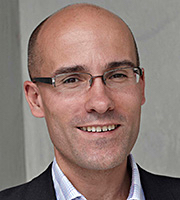 Smith cited Dr. Mariam Jamal-Hanjani, a clinician in Professor Charlie Swanton’s lab at University College London’s Francis Crick Institute, who is working on the project to collect post-mortem tumor samples.
Smith cited Dr. Mariam Jamal-Hanjani, a clinician in Professor Charlie Swanton’s lab at University College London’s Francis Crick Institute, who is working on the project to collect post-mortem tumor samples.
Dr. Jamal-Hanjani said the Centres Network Accelerator Award will be used to help roll out the PEACE study nationally: “We will have genetic information tracking cancer from diagnosis, throughout the disease, and now to the point of death. It’s the entire cancer journey, the ultimate evolution of cancer from beginning to end.
“It was about three years ago,” Jamal-Hanjani added, “a cold, grey November day — that Charlie mentioned to me, ‘You know, we should set up a post-mortem study’. To be honest, I wasn’t certain patients would want such a thing. Most people associate the phrase post-mortem with an autopsy, an examination carried out to establish the cause of death. But the phrase literally means after death. And in the case of the PEACE study, the researchers are collecting samples from consenting patients just after death to unravel what happens in those final stages of cancer.
“We collect samples of tumours from the original site where it began and the organs it spread to, and take blood samples to analyse cancer cells and DNA circulating in the bloodstream. We need to collect the samples fairly soon after death, so there is a huge team of people involved,” he said.
“It’s going to be a really powerful study when combined with clinical research like the Cancer Research UK-funded TRACERx study,” Jamal-Hanjani added.
Smith noted that when the PEACE study opened last year, Dr. Jamal-Hanjani noticed rapid growth of interest among both doctors and patients, saying “We had to turn patients away because we didn’t have enough money to include everyone. It was heart-breaking.”
Enhancing Understanding of Immunotherapy’s Potential
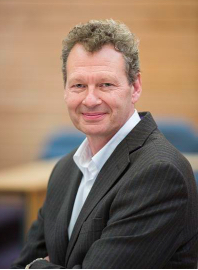 Immunotherapy has been making science headlines lately, but Smith noted that decades of research has demonstrated that unleashing the immune system on tumors isn’t easy, with much remaining that scientists don’t know. As Professor Tim Elliott, of the University of Southampton, who is heading up the second Centre project, observed: “we don’t yet know why this is…. We hope to be able to come up with ways to predict how likely any given immunotherapy is to help a patient.” Immunotherapies can also cause some fairly serious side effects, he said, “and while we’re getting better at managing these, we still don’t want to be giving patients these treatments if they are not going to benefit.”
Immunotherapy has been making science headlines lately, but Smith noted that decades of research has demonstrated that unleashing the immune system on tumors isn’t easy, with much remaining that scientists don’t know. As Professor Tim Elliott, of the University of Southampton, who is heading up the second Centre project, observed: “we don’t yet know why this is…. We hope to be able to come up with ways to predict how likely any given immunotherapy is to help a patient.” Immunotherapies can also cause some fairly serious side effects, he said, “and while we’re getting better at managing these, we still don’t want to be giving patients these treatments if they are not going to benefit.”
Smith reported that Elliott and his team will be collecting immune cells from inside tumors and analyzing in detail exactly what types of immune cells are there and which genes are turned on and off in cell different groups. By comparing how well different immunotherapies worked with the detailed samples investigated, the investigators hope to be able to develop ways to predict how likely a given immunotherapy is to help a patient, to find ways to better tailor immunotherapy to the needs of individual patients, to find more effective combinations with other treatments, and to reduce side effects.
Supporting Development of New Radiotherapy Technologies
Smith observed that new and promising radiotherapy techniques are emerging, such as stereotactic ablative radiotherapy (SABR), magnetic-resonance image (MRI) guided radiotherapy, and proton beam radiotherapy, all of which kill cancer cells by dosing them with radiation — much like standard radiotherapy — but much more precisely.
She noted that SABR achieves greater precision by targeting tumors with radiation from multiple angles, while MRI-guided radiotherapy provides a 3-D map of a tumor during treatment, allowing clinicians to adjust accordingly. Proton beams stop penetrating once they’ve reached their designated target, shielding adjacent tissue from radiation damage.
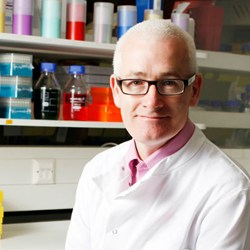 But it’s often unclear which type of radiotherapy works best for a particular patient, and the third Cancer Research UK-funded project, led by Professor Kevin Harrington at The Institute of Cancer Research in London, will attempt to discover why. “The problem we’re facing for these new technologies is the lack of evidence on how best to use them — we still don’t know the full benefits they can offer,” Harrington told Smith. “And without this evidence, we simply don’t know which patients should be treated by them.”
But it’s often unclear which type of radiotherapy works best for a particular patient, and the third Cancer Research UK-funded project, led by Professor Kevin Harrington at The Institute of Cancer Research in London, will attempt to discover why. “The problem we’re facing for these new technologies is the lack of evidence on how best to use them — we still don’t know the full benefits they can offer,” Harrington told Smith. “And without this evidence, we simply don’t know which patients should be treated by them.”
Harrington team’s plan is to develop guidelines for determining the best ways to test new techniques — such as the optimum dose and number of treatments. “We’d like to see radiotherapy becoming more targeted so we can give bigger doses in fewer treatments,” Harrington said. “Not only is this quicker and easier for patients, but it’s more effective at destroying cancer and saves the NHS (National Health Service) money too.” Another important aspect of this research is that many of the NHS’ standard radiotherapy machines are getting old and need replacing, with Harrington wondering if the old machines should simply be updated, or if there are better alternatives.
“That’s what our research is setting out to determine,” he said.
Toward Greater Understanding of Brain Tumors
Smith observed that while survival rates for many types of cancer have improved substantially over the past 40 years, this has not been the case with brain tumors.
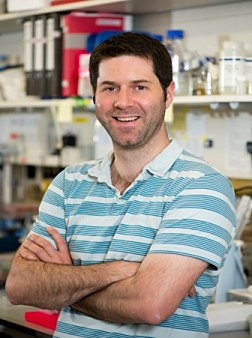 Edinburgh will use its award to focus on gliomas — the most common type of brain tumor. Smith reported that the project’s leader, Dr. Steven Pollard, sees the financial support as an opportunity to set up a crucial resource: “We have the opportunity to get an unprecedented level of genetic and molecular detail, enabling us to create a complete catalogue of the different types of brain tumors. … It’s not always been easy getting funding to study brain tumors, or enough young scientists wanting to work in this area,” and “this award will really help us with the fundamental work we need to carry out getting high quality samples to study.”
Edinburgh will use its award to focus on gliomas — the most common type of brain tumor. Smith reported that the project’s leader, Dr. Steven Pollard, sees the financial support as an opportunity to set up a crucial resource: “We have the opportunity to get an unprecedented level of genetic and molecular detail, enabling us to create a complete catalogue of the different types of brain tumors. … It’s not always been easy getting funding to study brain tumors, or enough young scientists wanting to work in this area,” and “this award will really help us with the fundamental work we need to carry out getting high quality samples to study.”
The Pollard group’s main focus is on glioblastoma multiforme — the most common and malignant form of primary adult brain cancer. These tumors are comprised of several phenotypically distinct cell types, including an immature stem cell population thought to drive tumor growth. “The long term goal of our research is to uncover the molecular and cellular mechanisms that control stem cell lineage choice, commitment and differentiation,” said Pollard, whose research team will collect different types of brain tumor cells donated by patients during surgery, to compile a complete catalog of different brain tumor types — containing detailed information that will be available to other researchers, and useful to help drive new drug discovery studies.
Working closely with teams at University College London, Pollard believes this systematic and joint approach will be crucial in understanding the biology of the disease and discovering new ways to treat it, and that studying these tumor cells will kick-start new projects and collaborations between scientists and industry.
Emma Smith concluded the blog by noting that research findings from the four awards could have a major impact on cancer treatment, particularly for hard to treat cancers. You can read her entire blog here.
Sources:
Cancer Research UK

